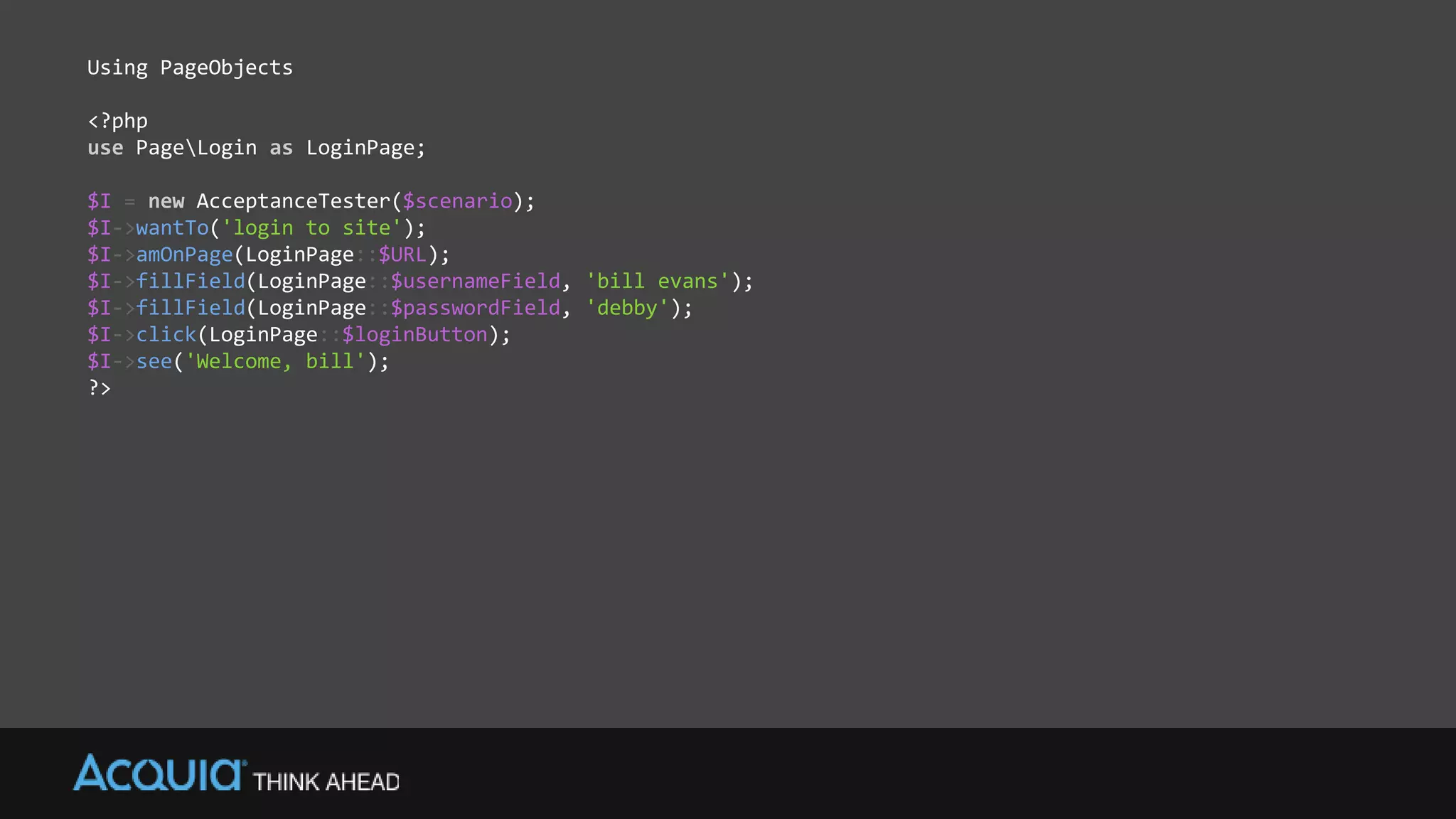This document discusses automated testing with Codeception. It introduces test-driven development (TDD) and its benefits. Codeception allows running different types of tests (acceptance, functional, unit) from one place. Installing and using Codeception for testing Drupal is described, including generating tests, running tests, using Selenium WebDriver, cleaning up databases, and reusing test code with step objects and page objects.


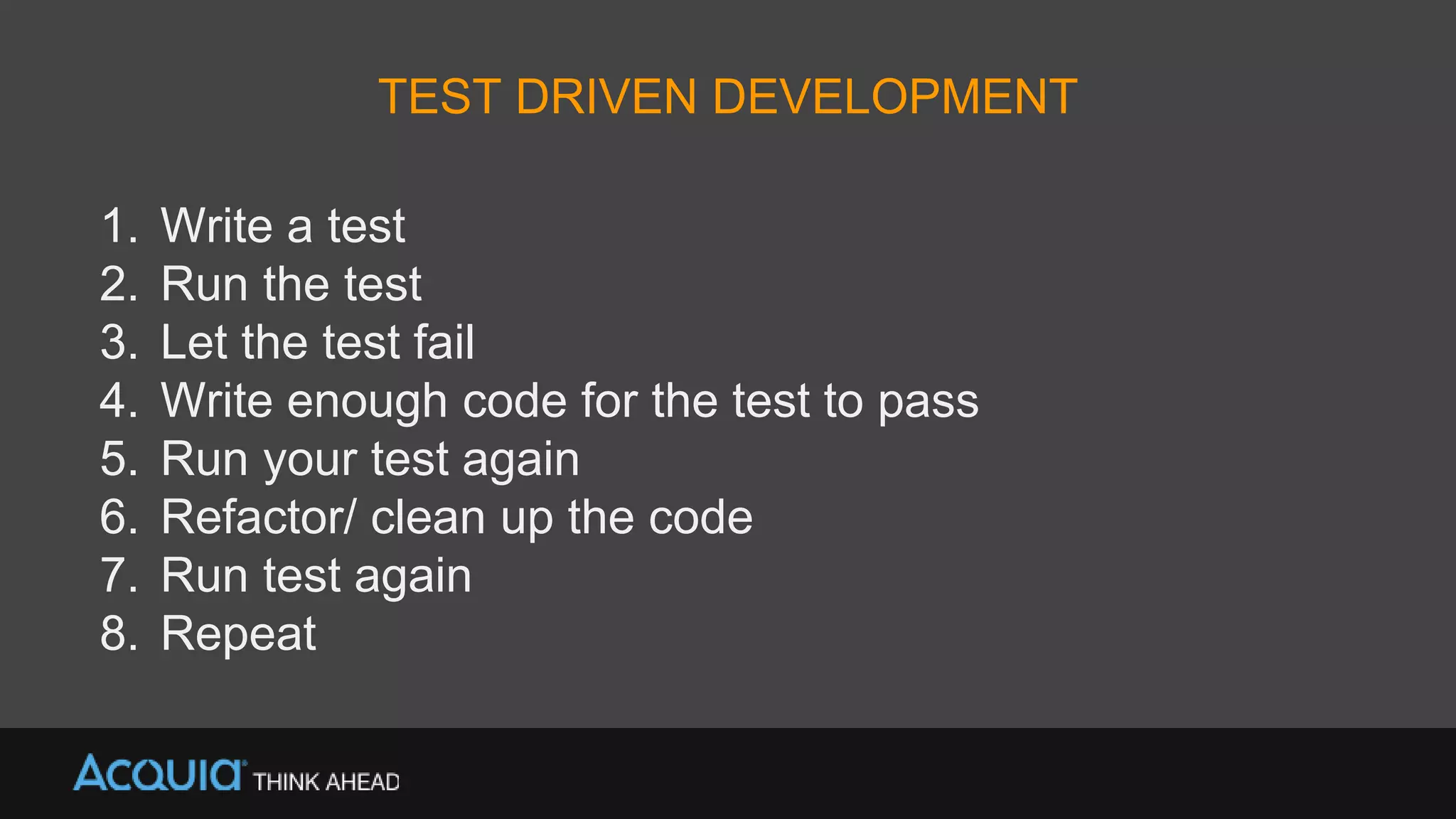

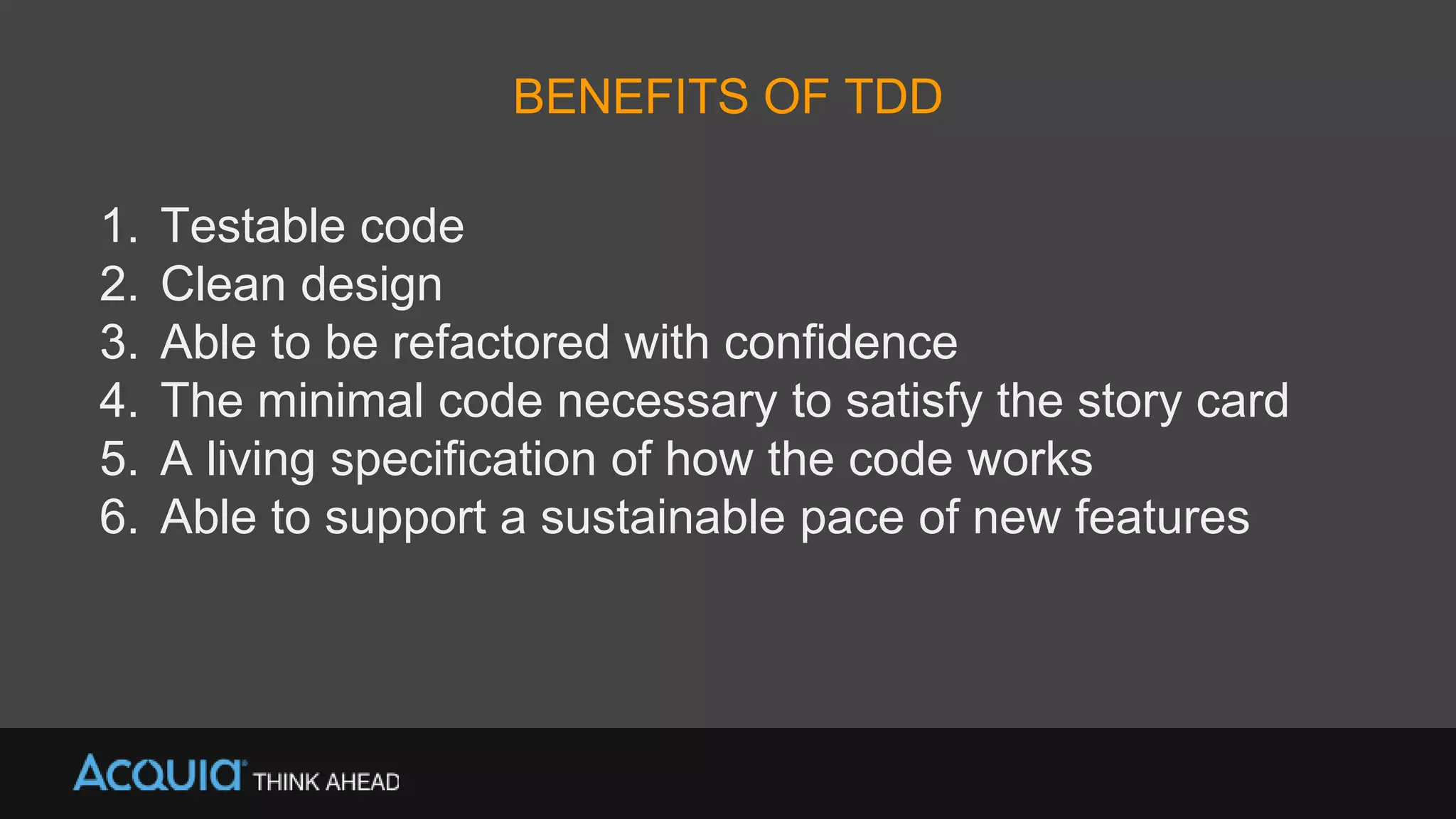

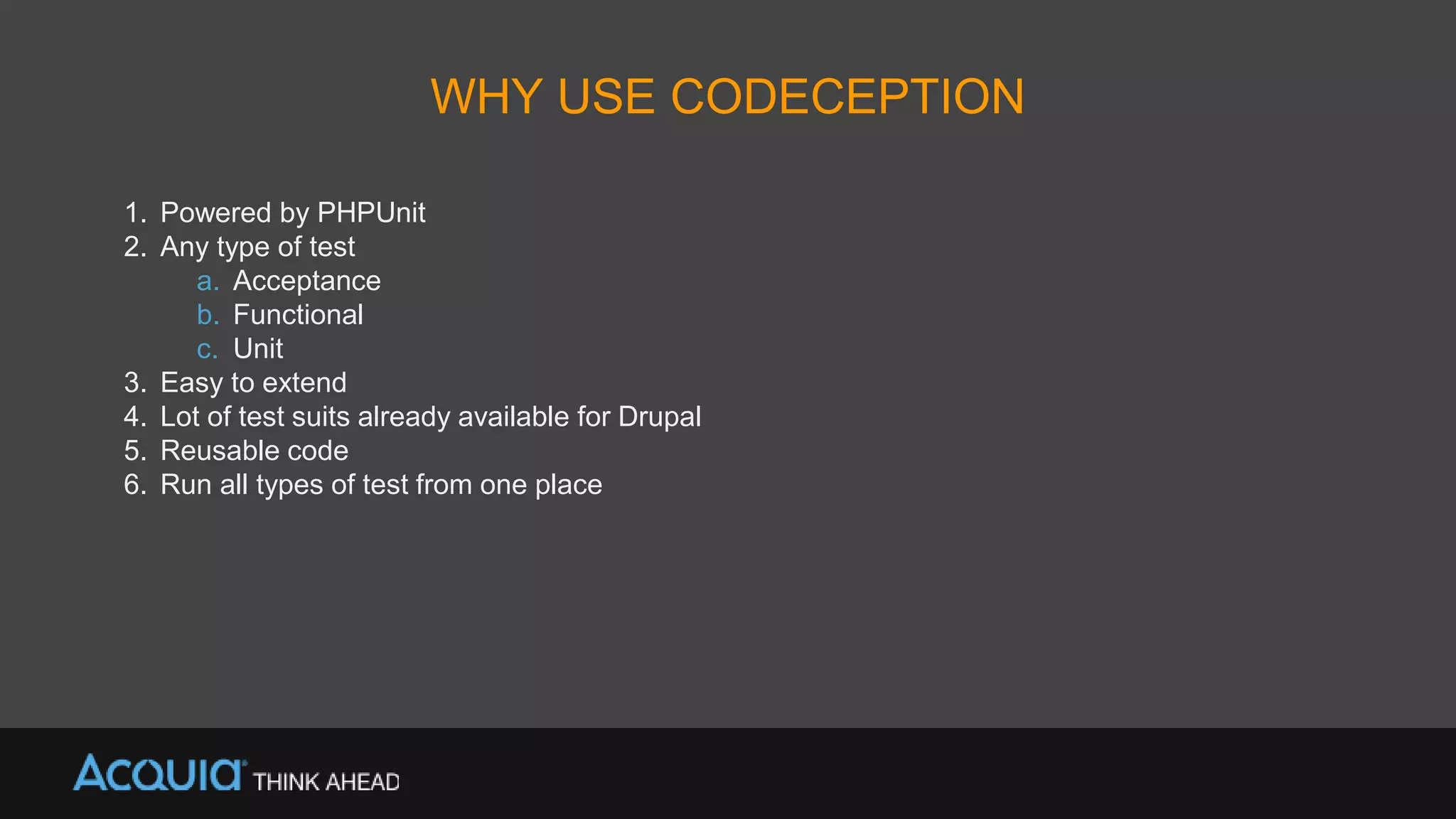
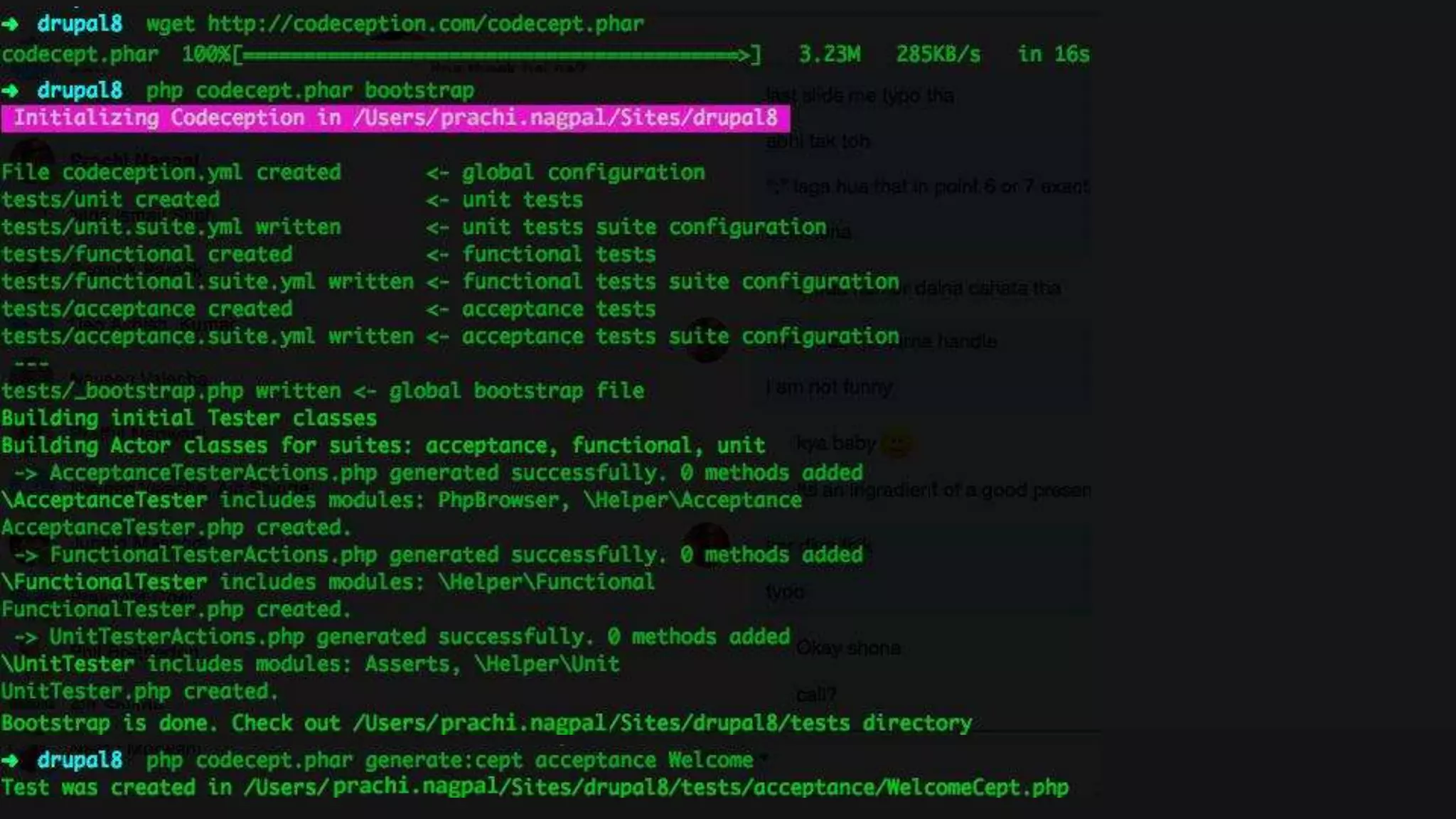
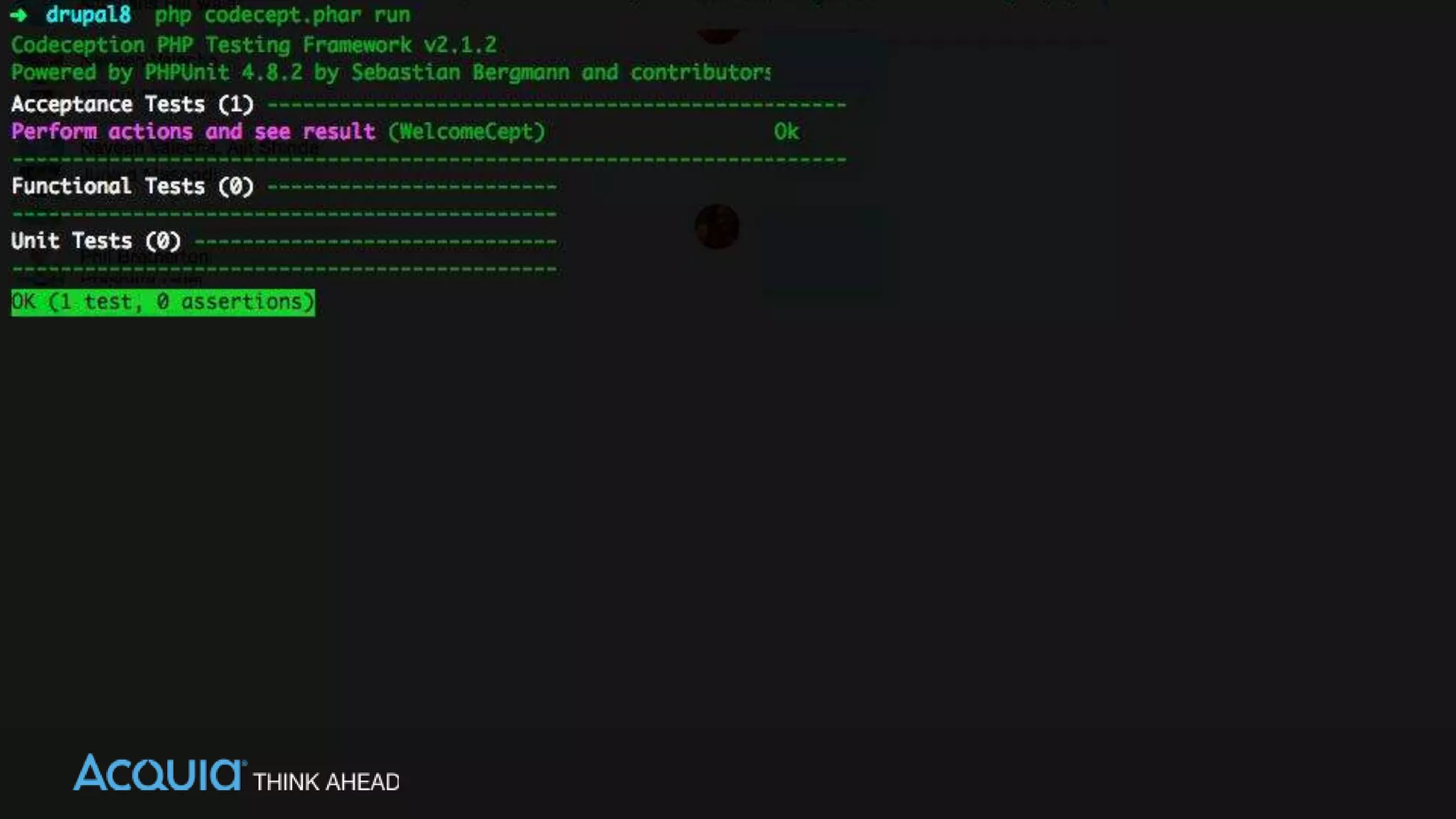
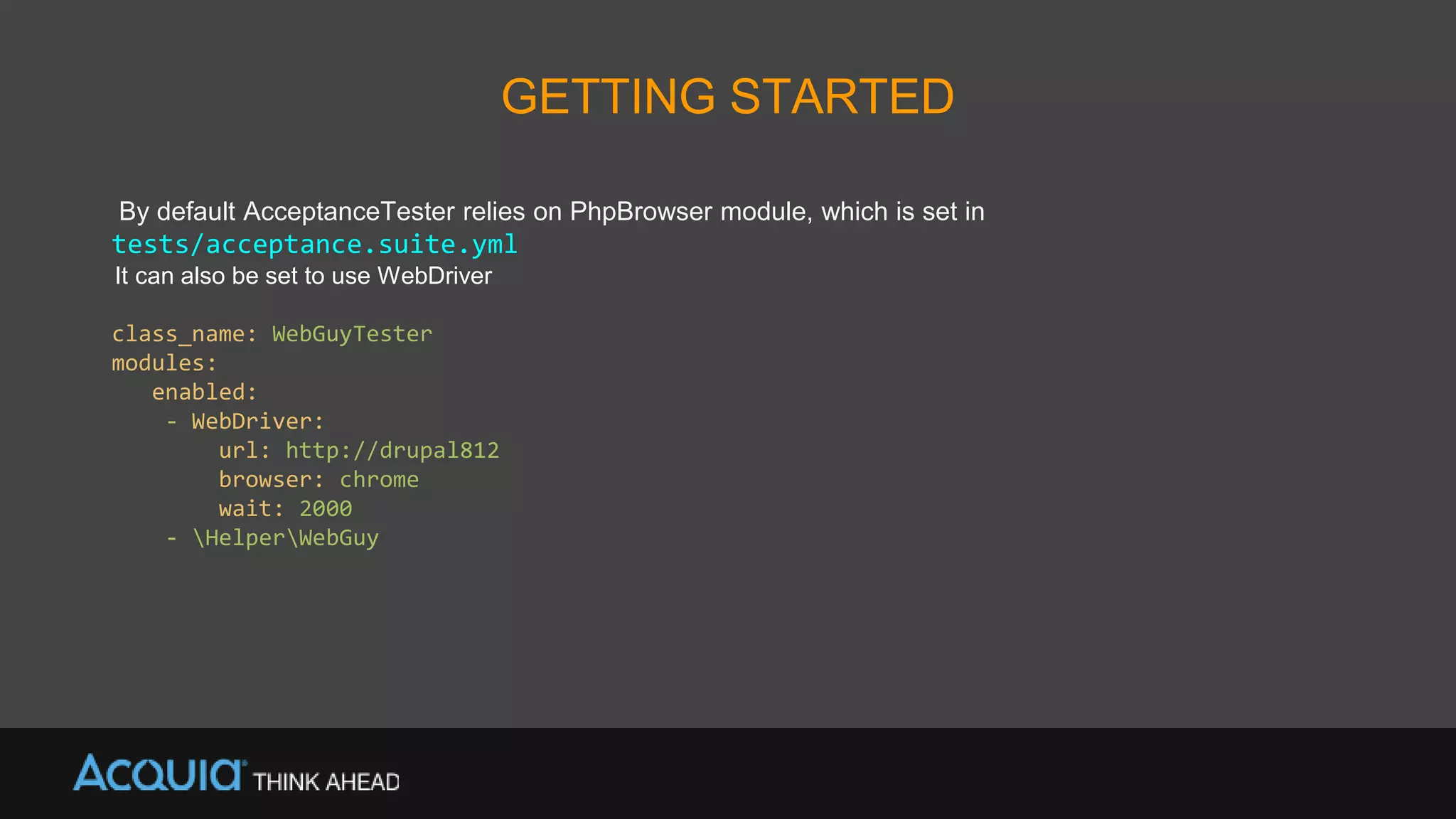
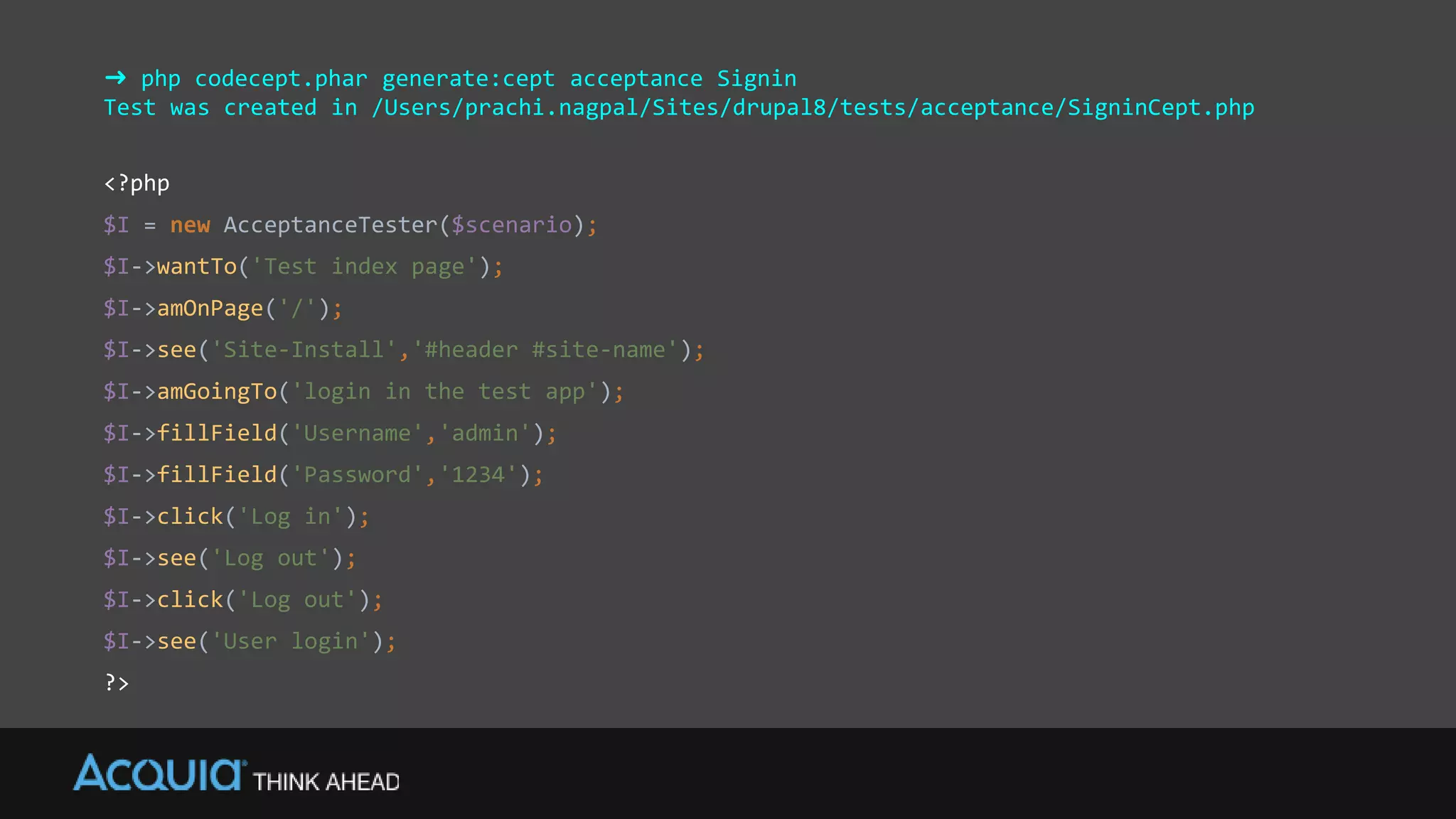
![EXAMPLE <?php $I = new AcceptanceTester($scenario); $I->wantTo('ensure that frontpage works'); $I->amOnPage('/'); $I->see('Home'); ?> <?php $I = new AcceptanceTester($scenario); $I->amOnPage('/'); $I->click('Sign Up'); $I->submitForm('#signup', ['username' => prachi.nagpal, 'email' => 'prachi.nagpal@acquia.com']); $I->see('Thank you for Signing Up!'); ?>](https://image.slidesharecdn.com/automatedtestingindrupal8-150825080905-lva1-app6891/75/Automation-testing-with-Drupal-8-12-2048.jpg)
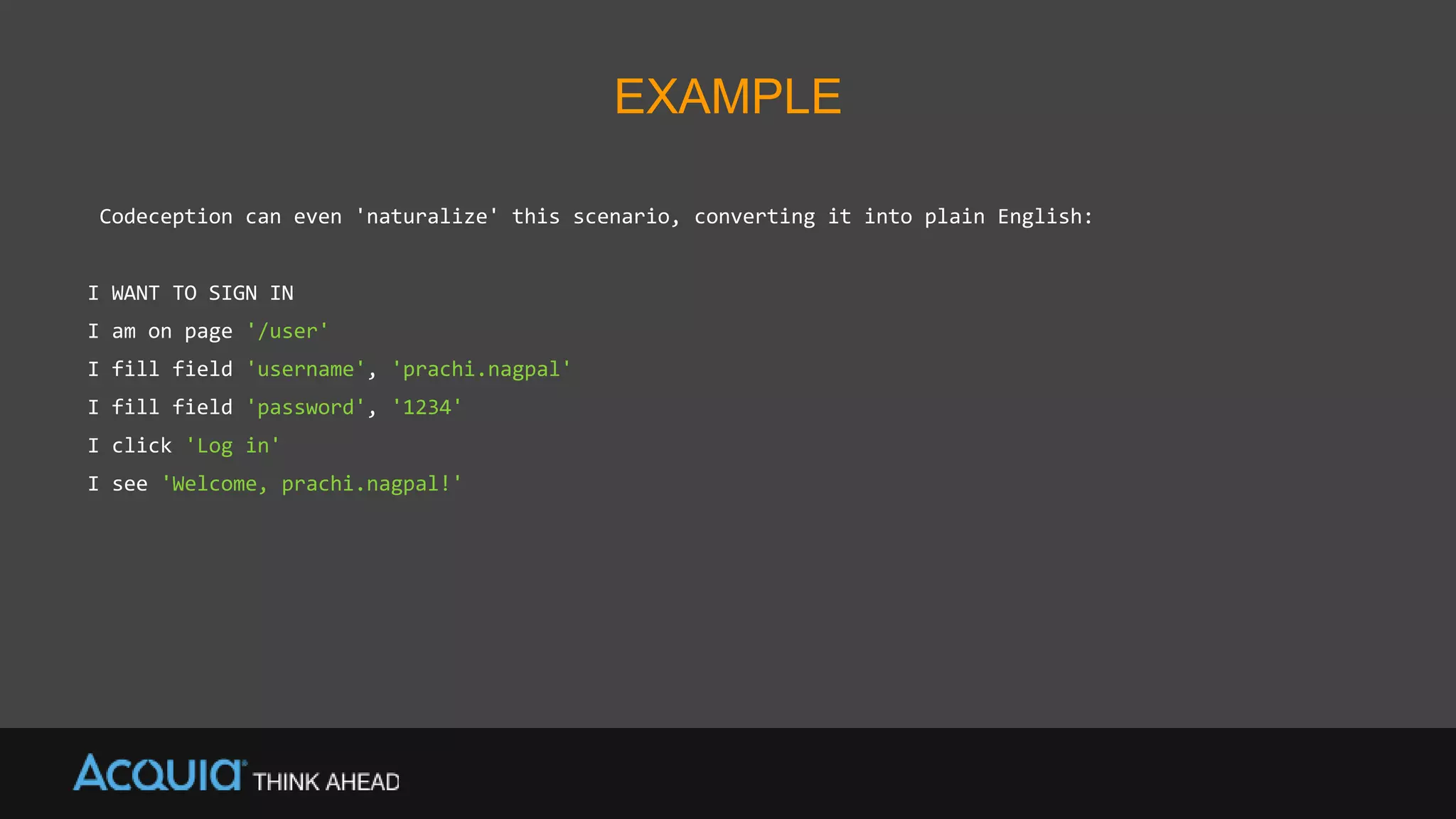
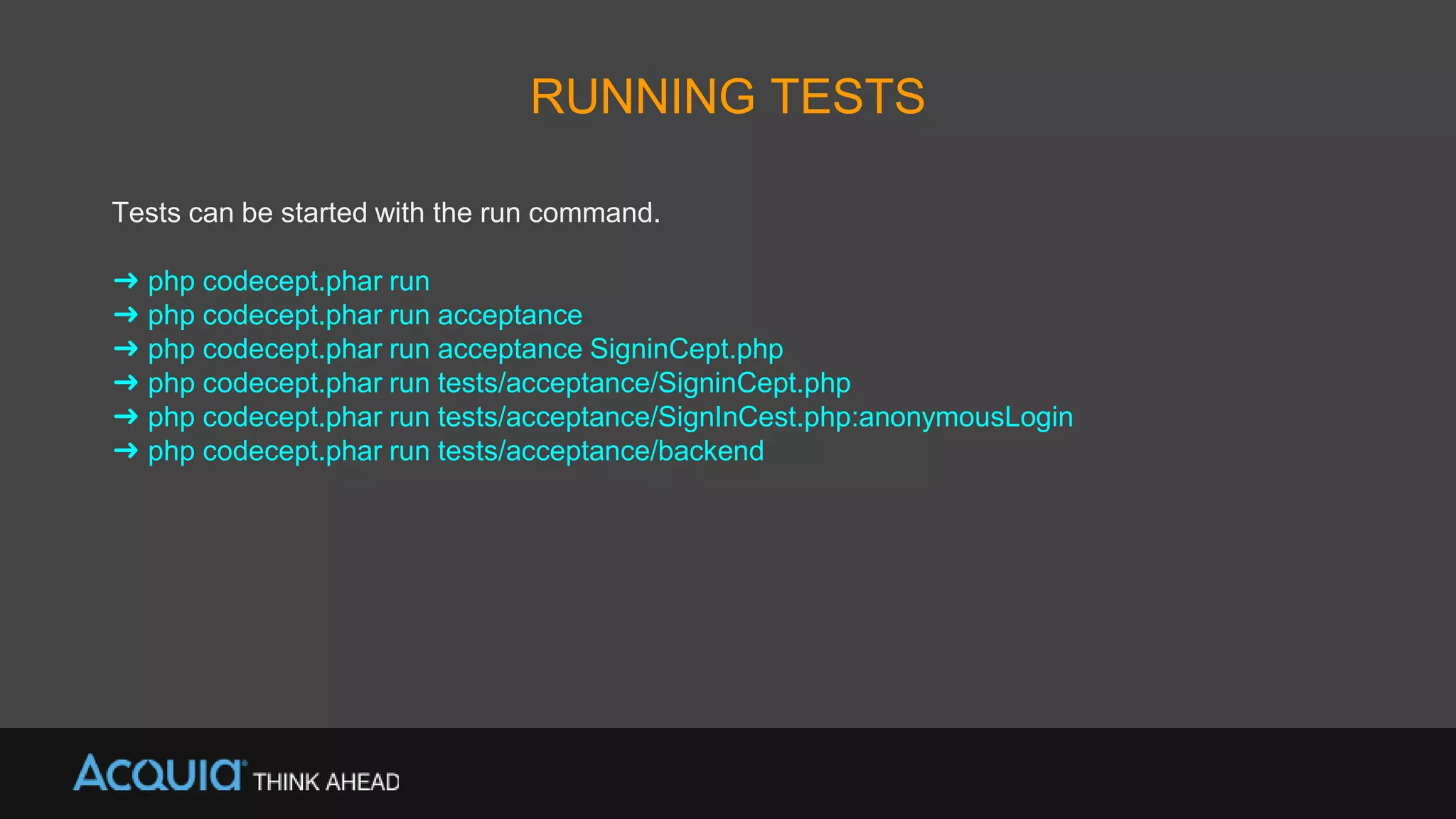
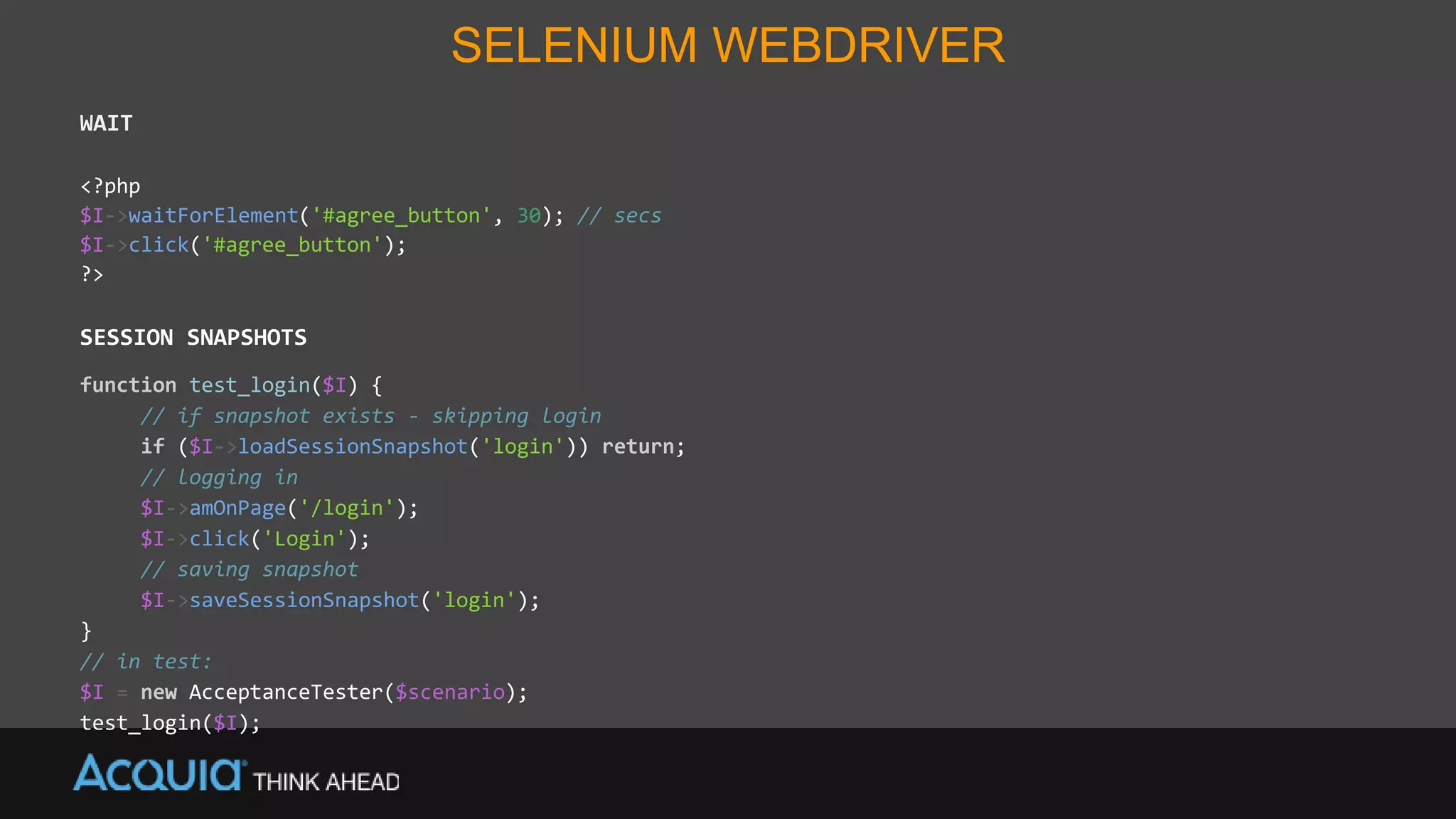

![CLEANING UP / DB SNAPSHOTS → Db module → Load a database dump after each passed test. → SQL dump to be put in /tests/_data directory. → Set the database connection and path to the dump in the global Codeception config. # in codeception.yml: modules: config: Db: dsn: '[set pdo dsn here]' user: '[set user]' password: '[set password]' dump: tests/_data/dump.sql](https://image.slidesharecdn.com/automatedtestingindrupal8-150825080905-lva1-app6891/75/Automation-testing-with-Drupal-8-17-2048.jpg)
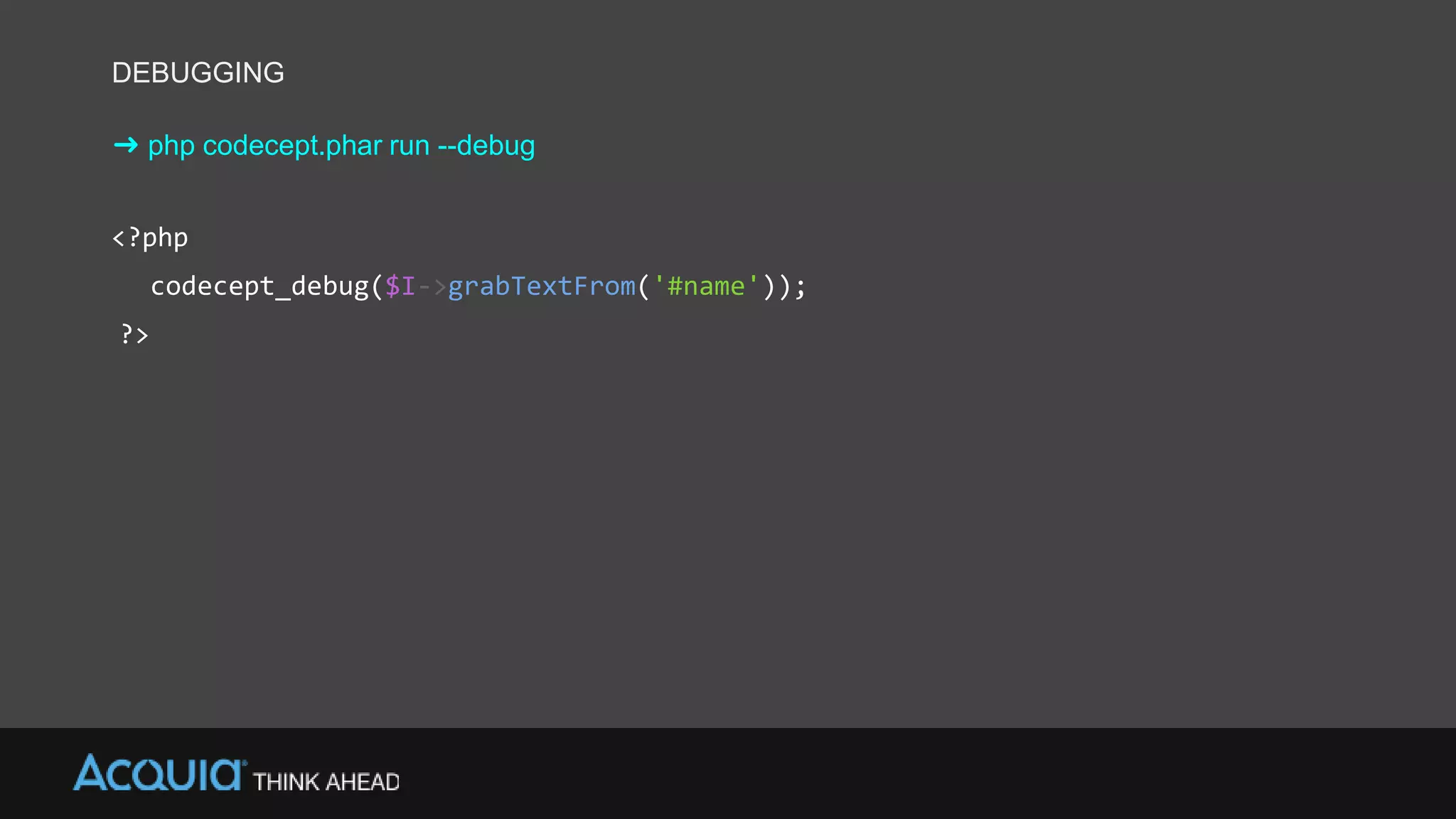
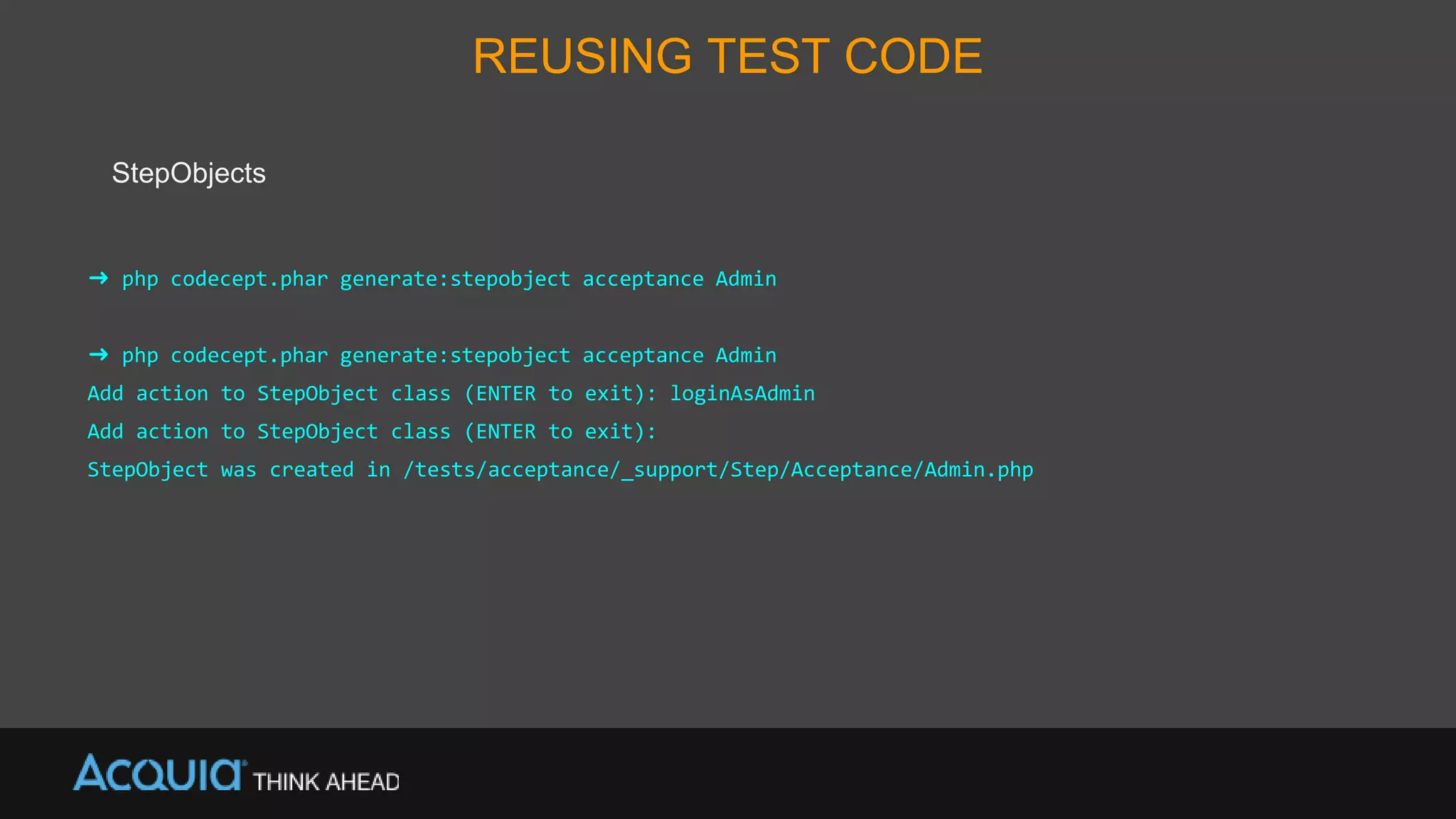

![PageObjects $ php codecept.phar generate:pageobject Login Defining PageObjects <?php namespace Page; class Login { public static $URL = '/login'; public static $usernameField = '#mainForm #username'; public static $passwordField = '#mainForm input[name=password]'; public static $loginButton = '#mainForm input[type=submit]'; } ?>](https://image.slidesharecdn.com/automatedtestingindrupal8-150825080905-lva1-app6891/75/Automation-testing-with-Drupal-8-21-2048.jpg)
